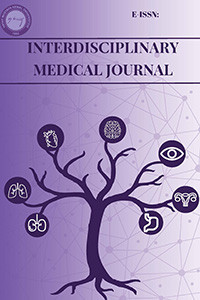The frequency and associated factors of infusion-related reactions to rituximab for patients with rheumatoid arthritis
The frequency and associated factors of infusion-related reactions to rituximab for patients with rheumatoid arthritis
___
- Grillo-López AJ, White CA, Dallaire BK, Varns CL, Shen CD, Wei A, et al. Rituximab: the first monoclonal antibody approved for the treatment of lymphoma. Curr Pharm Biotechnol. 2000;1(1):1-9. https://doi.org/10.2174/1389201003379059.
- Engel P, Gómez-Puerta JA, Ramos-Casals M, Lozano F, Bosch X. Therapeutic targeting of B cells for rheu-matic autoimmune diseases. Pharmacol Rev. 2011;63 (1):127-156. https://doi.org/10.1124/pr.109.002006.
- Cohen SB, Emery P, Greenwald MW, Dougados M, Furie FA, Genovese MC, et al. Rituximab for rheuma-toid arthritis refractory to anti-tumor necrosis factor therapy. Arthritis Rheum. 2006;54(9):2793-2806. https://doi.org/ 10.1002/art.22025.
- Food and Drug Administration. [webpage on the Internet]. Questions and answers on rituximab (added 12/19/2006). Available from: https://wayback.archiveit.org/7993/20170722191606/https://www.fda.gov/Drugs/DrugSafety/Postmarket Drug Safety Information for Patients and Providers/ucm109107.htm. Accessed August 9, 2017.
- Schioppo T, Ingegnoli F. Current perspective on rituximab in rheumatic diseases. Drug Des Devel Ther. 2017;11:2891-2904. https://doi.org/ 10.2147/DDDT.S139248.
- Pichler WJ. Adverse side-effects to biological agents. Allergy. 2006;61(8):912-920. https://doi.org/ 10.1111/j.1398-9995.2006.01058.x.
- Vogel WH. Infusion reactions: diagnosis, assessment, and management. Clin J Oncol Nurs. 2010;14(2): E10-21. https://doi.org/ 10.1188/10.CJON.E10-E21.
- van Vollenhoven RF, Emery P, Bingham CO 3rd, Keystone EC, Fleischmann R, Furst DE, et al. Longterm safety of patients receiving rituximab in rheumatoid arthritis clinical trials. J Rheumatol. 2010;37(3):558-567. https://doi.org/ 10.3899/jrheum.090856.
- Aletaha D, Neogi T, Silman AJ, Funovtis J, Felson DT, Bingham CO 3rd, et al. 2010 rheumatoid arthritis classification criteria: an American College of Rheumatology/European League Against Rheumatism col-laborative initiative. Arthritis Rheum. 2010;62(9):2569-2581. https://doi.org/10.1002/art.27584.
- Doesseger L, Banholzer ML. Clinical development methodology for infusion-related reactions with mo-noclonal antibodies. 2015:17;4(7):e39. https://doi.org/ 10.1038/cti.2015.14.
- National Cancer Institute. Common Terminology Criteria for Adverse Events v5.0. (CTCAE) Publish date November 27, 2017. https://ctep.cancer.gov/protocoldevelop-ment/electronic_applications/docs/CTCAE_v5_Quick_Reference_8.5x11.pdf.
- van Gestel AM, Haagsma CJ, van Riel PL. Validation of rheumatoid arthritis improvement criteria that include simplified joint counts. Arthritis Rheum. 1998;41(10):1845-1850. https://doi.org/10.1002/1529-0131(199810)41:10<1845::AID-ART17>3.0.CO;2-K.
- Buch MH, Smolen JS, Betteridge N, Breedveld FC, Burmester G, Dörner T, et al. Updated consensus sta-tement on the use of rituximab in patients with rheumatoid arthritis. Ann Rheum Dis. 2011;70(6):909-920. https://doi.org/ 10.1136/ard.2010.144998.
- Pritchard CH, Greenwald MW, Kremer JM, Gaylis NB, Rigby W, Zlotnick S, et al. Safety of infusing ri-tuximab at a more rapid rate in patients with rheumatoid arthritis: results from the RATE-RA study. BMC Musculoskelet Disord. 2014;15:177. https://doi.org/10.1186/1471-2474-15-177.
- Salmon JH, Perotin JM, Morel J, Dramé M, Cantagrel A, Ziegler LE. Serious infusion-related reaction after rituximab, abatacept, and tocilizumab in rheumatoid arthritis: prospective registry data. Rheumatology (Oxford). 2018;57(1):134-139. https://doi.org/10.1093/rheumatology/kex403.
- Atzeni F, Turiel M, Capsoni F, Doria A, Meroni P, Sarzi-Puttini S. Autoimmunity and anti-TNF-alpha agents. Ann N Y Acad Sci. 2005;1051:559-569. https://doi.org/10.1196/annals.1361.100.
- Conti F, Ceccarelli F, Perricone C, Alessandri C, Conti V, Massaro L, et al. Rituximab infusion-related adver-se event rates are lower in patients with systemic lupus erythematosus than in those with rheumatoid arthritis. Rheumatology (Oxford). 2011;50(6):1148-1152. https://doi.org/10.1093/rheumatology/keq436.
- Rovin BH, Furie B, Latinis K, Looney RJ, Fervenza FC, Guerrero JS, et al. LUNAR Investigator Group. Effi-cacy and safety of rituximab in patients with active proliferative lupus nephritis: the Lupus Nephritis As-sessment with Rituximab study. Arthritis Rheum. 2012;64(4):1215-1226. https://doi.org/ 10.1002/art.34359.
- D’Arena G, Simeon V, Laurenti, Cimminiello M, Innocenti I, Gilio M, et al. Adverse drug reactions after intravenous rituximab infusion is more common in hematologic malignancies than in autoimmune di-sorders and can be predicted by the combination of few clinical and laboratory parameters: results from a retrospective, multicenter study of 374 patients. Leuk Lymphoma. 2017;58(11):2633-2641. https://doi.org/ 10.1080/10428194.2017.1306648.
- McLaughlin P, Grillo-Lopez AJ, Link BK, Levy R, Czuczman MS, Williams ME, et al. Rituximab chimeric anti-CD20 monoclonal antibody therapy for relapsed indolent lymphoma: half of the patients respond to a four-dose treatment program. J Clin Oncol. 1998;16(8):2825-33. https://doi.org/ 10.1200/JCO.1998.16.8.2825.
- Brown BA, Torabi M. Incidence of infusion-associated reactions with rituximab for treating multiple scle-rosis: a retrospective analysis of patients treated at a US centre. Drug Saf. 2011;34(2):117-123. https://doi.org/ 10.2165/11585960-000000000-00000.
- Hauser SL, Waubant E, Arnold DL, Wollmer T, Antel J, Fox RJ, et al. B-Cell depletion with rituximab in re-lapsing-remitting multiple sclerosis. N Engl J Med. 2008;358(7):676-88. https://doi.org/10.1056/NEJMoa0706383.
- Chung CH. Managing premedications and the risk for reactions to infusional monoclonal antibody the-rapy. Oncologist. 2008;13(6):725-732. https://doi.org/10.1634/theoncologist.2008-0012.
- Kimby E. Tolerability and safety of rituximab (MabThera). Cancer Treat Rev. 2005;31(6):456-73. https://doi.org/10.1016/j.ctrv.2005.05.007
- Winkler U, Jensen M, Manzke O, Schulz H, Diehl V, Engert A. Cytokine-release syndrome in patients with B-cell chronic lymphocytic leukemia and high lymphocyte counts after treatment with anti-CD20 monoc-lonal antibody (rituximab, IDEC-C2B8). Blood 1999;94:2217-2224.
- Frasca D, Diaz A, Romero M, Landin AM, Blomberg BB. Age effects on B cells and humoral immunity in humans. Ageing Res Rev. 2011;10(3):330-335. https://doi.org/10.1016/j.arr.2010.08.004.
- Yayın Aralığı: 3
- Başlangıç: 2023
- Yayıncı: Hatay Mustafa Kemal Üniversitesi Tıp Fakültesi Dekanlığı
Surveillance of urine cultures and evaluation gram negative uropathogens;five year data from Erbil
Mohammed SADEQ, Hevi GHAFOUR, Tayfur DEMİRAY, Mustafa ALTINDİŞ
Determination of 25 hydroxyvitamin D reference ranges in Hatay region by indirect method
Intestinal-type adenocarcinoma of the sinonasal mucosa: a rare case report
Didar GÜRSOY KUZULUK, Süleyman UYSAL, Gül SOYLU ÖZLER
The approach of society regarding the violence against healthcare providers
Yusuf Gazi UÇAR, Celal KUŞ, Raziye Şule GÜMÜŞTAKIM, Mustafa Emre ERYILMAZ
Pelin HIZLI, Mehmet Enes SEVGİLİ, Arzu KILIÇ
Comparison of efficacy of Ketorolac %0.4 and Dexamethasone %0.1 in inflamed Pterygium and Pinguecula
Kaan ÇAKMAK, Safak KORKMAZ, Funda YILMAZ
Local and systemic side effects of the coronanovac vaccine
Ayşe KARAOĞULLARINDAN, Sanem Okşan ERKAN, Birgül TUHANİOĞLU, İlhami YILDIRIM, Asena Ayça ÖZDEMİR
Kubilay KARABOYUN, Erdoğan Selçuk ŞEBER
A case of acalculous cholecystitis or Brucella-induced acute cholecystitis?
